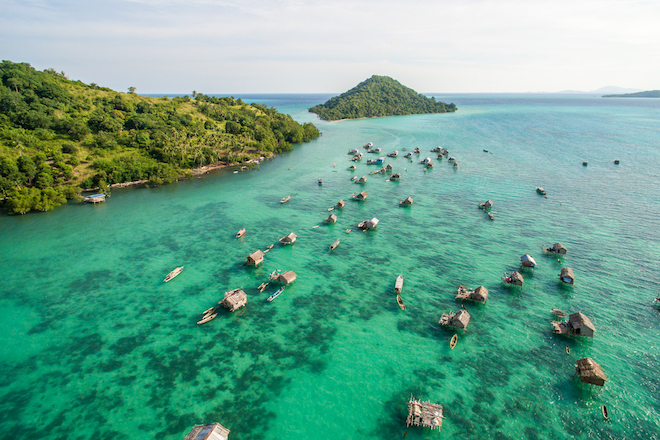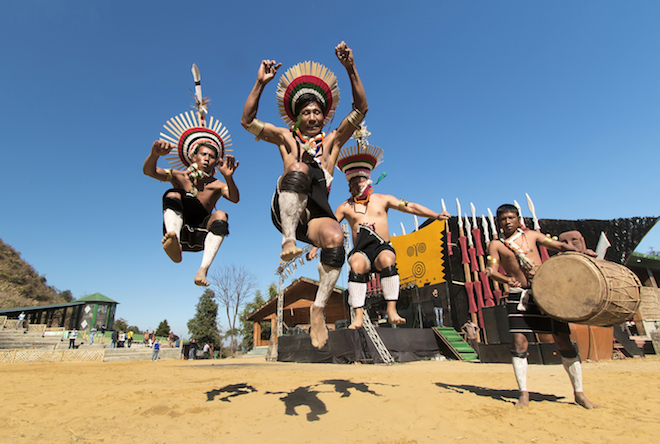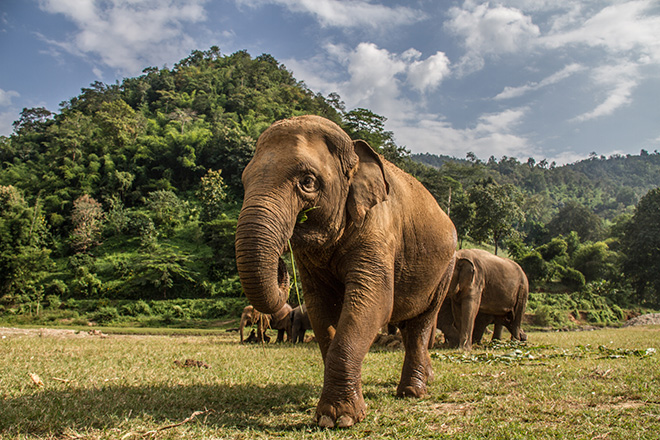By Localiiz
Branded | 17 May 2024
By Localiiz
Branded | 14 May 2024
Copyright © 2025 LOCALIIZ | All rights reserved
Subscribe to our weekly newsletter to get our top stories delivered straight to your inbox.
There are few better ways to enjoy a holiday than to branch out and explore some of nature’s greatest wonders, but ethical travel is a growing concern for holiday-goers. In recent months, major tourist sites Boracay and Maya Bay have closed in a bid to let the land and its wildlife recover – proof that green travel is on the horizon. These are just some of the eco-friendly destinations that Asia holds in store.
No architectural feat is more impressive than the world’s stunning landscapes, dramatic clifftops, and picture-perfect postcard moments. These destinations are a photographer's haven.

In Jiuzhaigou Nature Park, a UNESCO World Heritage site since 1992, fallen trees lie encased in the crystal clear turquoise pool of Five Flower Lake, as if lost in time. Almost prehistoric in appearance, Jiuzhaigou is one of the most picturesque sites in the Tibetan plateau, the valley spreads across more than 700 kilometres. The name translates as ‘Valley of the Nine Fortified Villages’, with seven of these villages remaining populated to date, though local farms have ceased operation to comply with the area’s status as a protected site.
Travellers tip: Travellers have been known to experience symptoms of altitude sickness, so consider consulting your doctor about a course of altitude sickness tablets before your trip.

The legends behind the Chocolate Hills are almost as striking as the marvels themselves. In this stunning landscape, you will find over 1,700 symmetrical structures that turn a rich brown hue when the monsoon months depart. From the rocks flung as giants duelled, to the tears shed by a lovesick giant (the third tale is more, ahem, physiological), the limestone mounds are remnants of the seabed combined with centuries of erosion and rainfall.
Travellers tip: November to March is dry season when you’ll see the hills at their most striking.
While eco-travel brings to mind long treks, picture-perfect scenery, and encounters with rare wildlife, some of the best experiences can be had engaging with people.

The Bajau people are a nomadic community that resides in East Sabah, Malaysia. Known as the ‘sea gypsies’, the communities live off the land (or in this case, sea), and are famed for their freediving abilities – they’ve been known to hold their breath underwater for up to twice the length of the average human! For a glimpse of life uninterrupted by modern technologies, book a day trip from Semporna to Tuk Sakaran Marine Park (accommodation is available on the mainland and on nearby Pom Pom Island). It’s a great place for snorkelling and scuba diving, too. Be sure to opt for a licensed tour operator and ask for your experience to include a tour of the water village off Bodgaya Island.
Travellers tip: Don’t take any plastics or non-biodegradables with you, as there are no nearby recycling or waste disposal facilities.

In the far-reaching corner of north-eastern India, Nagaland is home to a community of more than 16 tribes, each of which maintains a rich cultural heritage to this day. To experience this diversity in its full extent, book a trip to coincide with the Hornbill Festival, held in November every year. This ten-day festival showcases a rich tapestry of art, culture, sport, and religious celebrations and is not to be missed. The Kohima Camp is a glamping experience unlike any other, offering guests luxurious accommodation and a personalised butler service among the unique Nagaland surroundings. We’d advise booking ahead, as the seasonal operation fills fast.
Travellers tip: Leave a day to visit the Fakim Wildlife Sanctuary, home to an array of rare wildlife including bison, boars, barking deer, and panthers.
There’s something magical about watching wild animals roam free in the great outdoors, just the way nature intended, and these top destinations help make this dream come true.

There’s a reason that Elephant Nature Park in Chiang Mai, northern Thailand is number one on the ethical list of places to visit and so highly rated the world over. Established in the 1990s by Lek Chailert, the granddaughter of a shaman healer, the park is home to 75 rescued elephants from all over Thailand, which have suffered unimaginable pain at the hands of humans. In this peaceful sanctuary, which covers an impressive 250 acres of open land, these majestic giants are given the chance to rehabilitate and live harmoniously among the herds, free of exploitation. Working hard to improve the lives and conditions of elephants, and educate visitors about the cruel implications of riding elephants, the park has a strict ‘saddle off’ policy.Guests are instead invited to feed, bathe, and walk alongside the herd in order to observe their natural behaviour and learn about their individual stories. If that isn’t enough to lure the eco-conscious travellers into the hills of northern Thailand, then maybe the fact that the park is also home to hundreds of affectionate rescue dogs and cats is. Visitors can choose from three packages at the park: a short visit, day visit, or an overnight stay, ranging from around HK$600 to HK$1,400. Definitely one for the travel bucket list!
Travellers tip: Opt for the overnight stay at the park, as you get to sleep in the incredible rustic huts next to the elephant ‘bedrooms’, and enjoy extended time with them the next morning before the day-trippers arrive.

Nothing beats an encounter with a wild orangutan during a jungle trek in Borneo, and thankfully, a thriving population of healthy adolescents and young adults can be found swinging freely in the trees of Semenggoh Wildlife Rehabilitation Centre in Kuching. For the last 20 years, rangers have been training orphaned orangutans, and those rescued from human captivity, how to survive in the wild. The programme has reached surrounding wildlife centres and helped the species breed naturally in the 750-hectare forest. The best time to visit is during the morning and afternoon feeding sessions when there is a good chance of spotting the semi-wild orangutans returning to the centre for a free meal. However, if they don’t make an appearance, this is a good thing, as it means the rangers have done a good job reintroducing them into the wild where they are able to fend for themselves. Costing just 20 Ringgit to enter, and located only a 30-minute bus ride from Kuching, this is one animal lover’s paradise that is not to be missed.
Travellers tip: Try to visit during the feeding sessions to avoid the disappointment of not seeing the orangutans swinging in the wild
Top